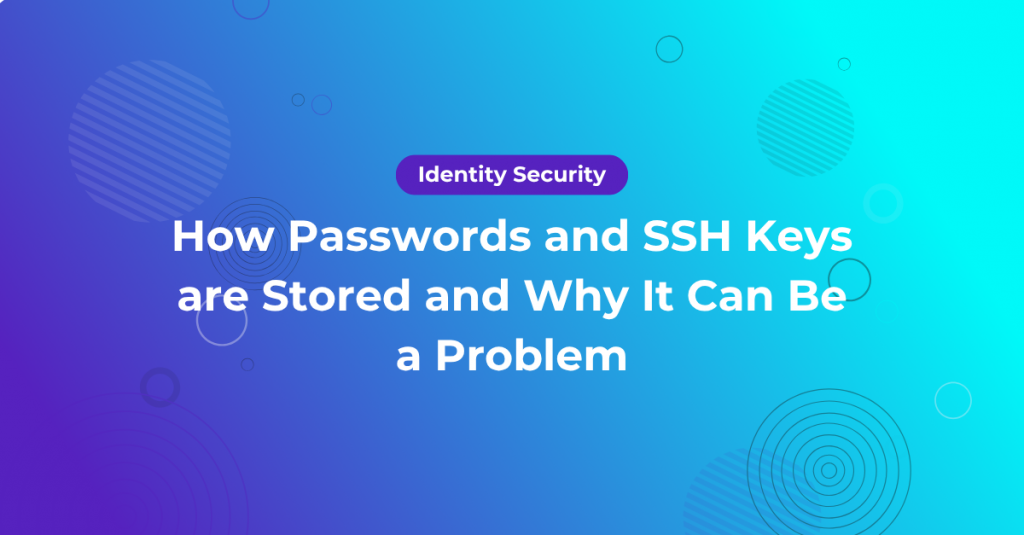Storing passwords and SSH keys in plain text — inside scripts, configuration files, or automation tools — remains a widespread practice in IT environments. Despite being a known vulnerability, it’s still common because it’s convenient, fast, and often the default way things are done under pressure.
Admins and engineers use scripts for tasks like backup, deployment, configuration management, and software updates. To make these workflows run unattended, credentials often get hardcoded directly into such scripts.
What starts as a time-saving shortcut quickly becomes a long-term risk. One exposed file can compromise not just one system, but multiple interconnected services.
What can go wrong: real examples
Credential leaks rarely stay isolated.
A backup script containing SSH keys might connect to a remote server storing historical data. If compromised, that server becomes an easy target. In another case, a monitoring tool might store database credentials in plain text, opening the door to data exfiltration.
And when it comes to network infrastructure: routers, switches, firewalls, these devices often rely on hardcoded admin credentials in automation scripts. Once exposed, those credentials can give attackers the highest level of access across the network.
Why PAM and AAPM change the game
The secure alternative isn’t just stronger passwords or manual reviews. It’s architectural. Application-to-Application Password Management (AAPM), a feature within Axidian Privilege. It enables applications and scripts to access credentials without exposing them.
Instead of relying on hardcoded secrets, credentials are retrieved securely from a protected vault at runtime. Access is granted based on strict policy, audited in real time, and rotated automatically.
It’s everything static credentials are not: dynamic, monitored, and safe.
Why Axidian Privilege is built for this
Axidian Privilege provides not just a vault, but a fully integrated PAM solution designed to handle both human and machine access scenarios.
With AAPM, credentials are delivered through API or command-line tools, controlled by access policies, and tracked end to end. Whether your team manages infrastructure manually or via scripts and tools, credential use becomes secure by design not just by habit.
This approach fits seamlessly into automated environments and meets the growing demands of modern IT, where compliance, speed, and visibility are non-negotiable.
How it connects with the bigger identity picture
Storing secrets securely is just one part of a larger strategy. Axidian Privilege works alongside:
- Axidian Access, for comprehensive identity management and multi-factor authentication
- Axidian CertiFlow, for handling digital certificates and key rotation
- Axidian Shield, for detection of vulnerable credentials and attacks on them in real time
Together, these tools support an identity-first security model — one that replaces fragile credential sprawl with visibility, control, and accountability.
If your passwords and SSH keys are hardcoded in the scripts, it’s time to act
If your organization still relies on embedded credentials, now’s the time to transition. PAM isn’t about locking things down—it’s about enabling secure operations without compromise.
Book a demo to see how Axidian Privilege handles privilege access management across your environment in compliance with the company’s security policies.
And if you want to stay in the loop on identity security trends and product updates, follow us on LinkedIn. We post regularly and always to the point.


